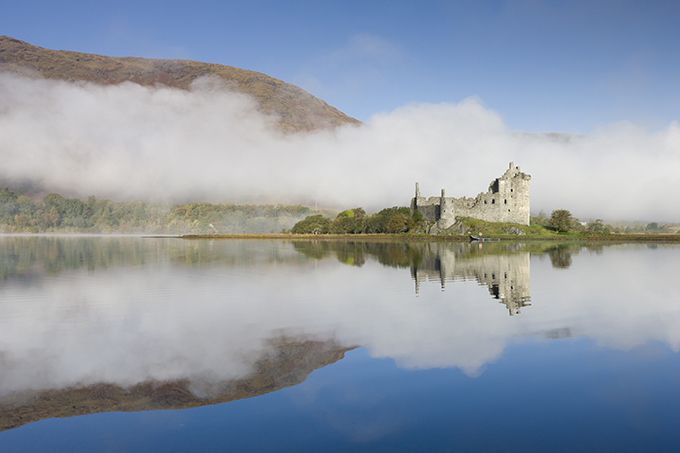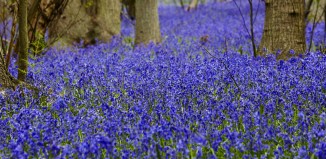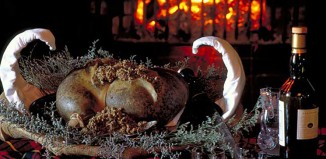Top 10 romantic ruins
Steeped in history and legend, and surrounded by stunning scenery, these windswept ruins provide the perfect setting for a romantic ramble…
Kilchurn Castle
Kilchurn Castle was built for Sir Colin Campbell of Glenorchy and extended in 1693. It continued to remain in the ownership of the Campbell family until the 18th century when it was greatly damaged after being hit by lightning and began to fall into disrepair. Today the jagged outline of this ruined castle is made even more memorable by the stunning location looking out over the northeast end of the appropriately named Loch Awe. The ragged remains of the four-storey tower are surrounded by sweeping mountains and the glistening waters of the loch, making this spot a perfect location for long secluded walks and romantic waterside picnics. Whether you arrive at the castle by boat or on foot, you can’t help but find it an evocative and awe-inspiring sight from every angle.
Whitby Abbey
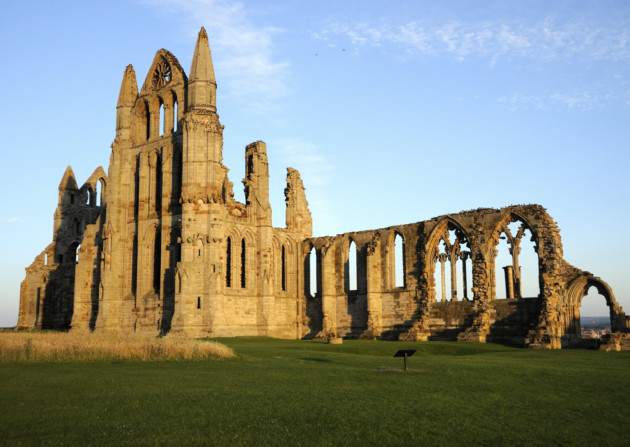
The first monastery on this site was founded by King Oswy of Northumbria in AD 657 and was ruled by princess Abbess Hild. The imposing Gothic remains of the 13th-century abbey that can be viewed at the site today are embellished with original carvings, as well as being mottled with marks left by nature and centuries of lashing wind and rain. On clearer days it’s possible to stand at the cliff-top abbey and enjoy the far-reaching views over the town and coastline. You can even descend the 199 “abbey steps” which lead down from the abbey to Whitby’s harbour area. Those who choose to tackle the steps will be pleased to hear there are convenient resting points dotted along the way where you can catch your breath and enjoy the view – just make sure you have enough energy left to make your way back up to the top again!
Denbigh Castle
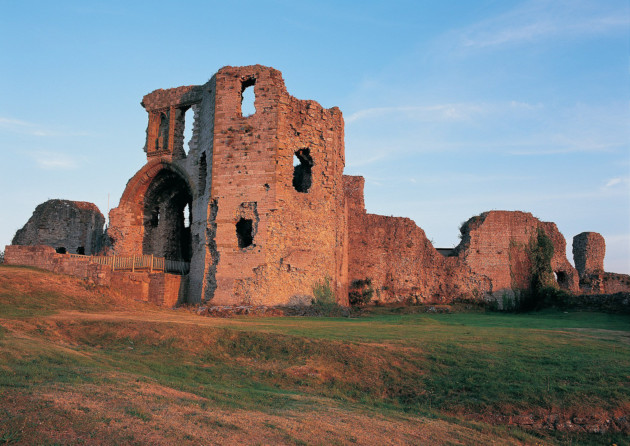
This Welsh fortress complete with the striking triple-towered gatehouse that stands guard over the medieval town of Denbigh offers visitors the chance to walk along the old town walls. The castle was built by Edward I’s commander, Henry de Lacy, after their successful campaign in the region. Hampered by a Welsh rebellion in 1294, the castle was finally completed with the help of the king’s master mason, James of St George.
St Andrews Cathedral
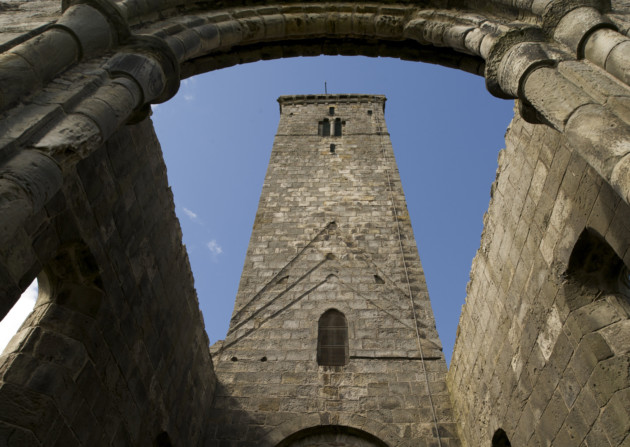
The fragmented remains of this great 12th-century cathedral serve as a reminder of what was once Scotland’s largest and grandest church. Although the cathedral itself lies in ruin, its early 12th century predecessor, St Rule’s Church, also located at the same site, has faired a little better. In fact, one of the great attractions of a visit here is to make your way to the top of St Rule’s 33-metre tower where you’ll be rewarded with a bird’s eye view of the cathedral site surrounded by the most complete monastic enclosure walls in Scotland. From this lookout point you’ll also be treated to a 360-degree panoramic view of the surrounding town and its sweeping coastline. The cathedral remains a prominent landmark and the Cathedral Museum situated amid the ruins is also home to an extensive collection of medieval carved stones, as well as the St Andrews sarcophagus dating from the 8th century.
Tintern Abbey

As well as looking resplendent in the daylight, Tintern Abbey is often illuminated at night, providing an enchanting scene for all those passing by. The abbey’s oldest brickwork dates from 1131 and its architecture spans over 400 years. Although the abbey is missing its roof and parts of its interior, the building remains largely complete, giving visitors the wonderful experience of strolling along the grass within the abbey walls, between huge columns that reach up to the open sky above. It’s easy to see how the abbey and its picturesque position in the Wye Valley, surrounded by hills, woodland and the sound of the rushing Wye river, became a favourite with artists and poets such as JMW Turner and William Wordsworth. The vista surrounding the abbey even provided enough inspiration for Wordsworth to compose an extensive poem in 1798.
Corfe Castle
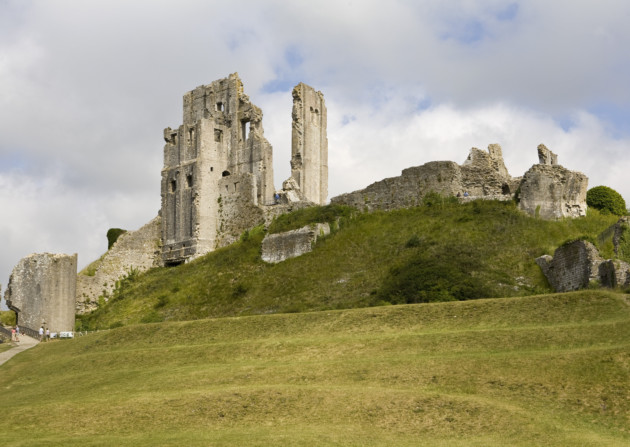
Perched on top of a 55-metre mound, the ruins of this ancient castle constructed of Purbeck limestone sprawl out over the hilltop. The first foundations of the castle were laid over 1,000 years ago and since then it has been used as a royal residence, a private home, treasury and military garrison, each leaving their mark on the site and helping to create today’s atmospheric ruins. After the castle’s occupants spent 600 years having to defend it from various onslaughts, an Act of Parliament was passed in 1646 ordering the destruction of the castle. It was left to Captain Hughes of Lulworth to carry out the task by digging deep holes filled with gunpowder to topple the towers and ramparts. What remains of the castle today has become a hugely popular place to visit, with its grounds covered with a blanket of wildflowers attracting a host of butterflies and other wildlife.
Tintagel Castle
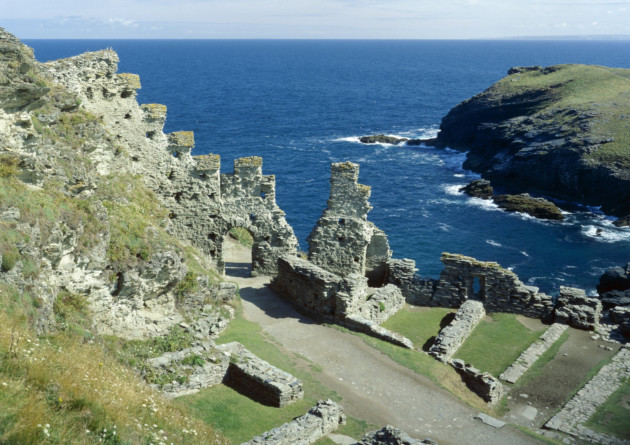
Clinging to Cornwall’s dramatic coastal cliffs, the ruins of Tintagel Castle are steeped in myth and legend. The crumbling remains that can be seen at the site today date from 1233 and were built for Richard, Earl of Cornwall. Before this, the site was rumoured to be the place of King Arthur’s conception and you might like to pay a visit to the nearby “Merlin’s Cave” after taking the steep track down to the castle walkway. The castle is also featured in the legend of the lovers Tristan and Isolde. Tristan’s uncle, King Mark entrusted Tristan with bringing Isolde to Cornwall so that she and King Mark could wed. Instead, Tristan and Isolde fell in love and embarked on an ill-fated affair. Today, couples can envisage the story that took place as they walk along the cliff-tops, through what remain of old archways and doorways that frame the impressive views of the rugged shoreline and the waves of the Atlantic Ocean crashing against the rocks below.
Glastonbury Abbey
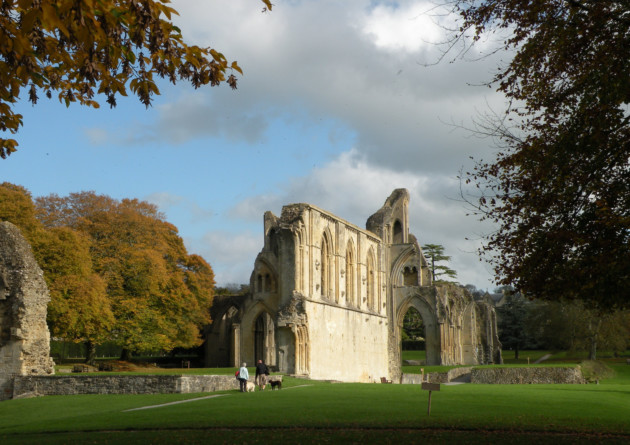
Visit the ruins of what was once England’s grandest abbey, set in 36 acres of peaceful parkland complete with shady picnic areas, fishponds and strewn with daffodils, snowdrops and other wildflowers. The grounds are also said to be the final resting place of King Arthur and Queen Guinevere, buried between two stone pyramids. Curious to see if the rumours were true, abbey monks began excavating the site in 1191. They discovered a couple buried together in the same coffin along with a stone with the inscription “His iacet inclitus Arturius in insula Avalonia” thought to translate as “Here lies King Arthur buried in Avalon”. The bodies were thought to belong to King Arthur and Queen Guinevere and were later moved to a tomb in the great Abbey Church in 1278, but disappeared after the abbey was vandalised during the dissolution in 1539, further adding to the great legend of King Arthur.
Witley Court
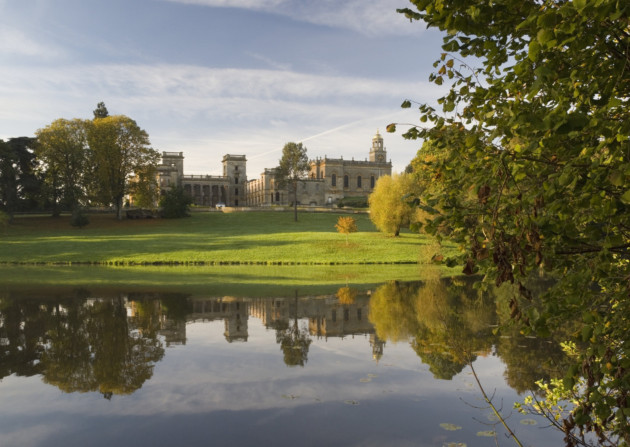
Beautifully landscaped grounds surround the picturesque ruins of this palatial 19th-century mansion, providing the perfect backdrop to a romantic day out. Stroll around the grounds and discover the impressive and immense fountains, the largest of which depicts the love story of Perseus and Andromeda from Greek mythology, who fell in love after Perseus saved Andromeda’s life by rescuing her from a sea monster and certain death. The fountains are made even more dramatic by their jets of water that can reach up to 120-foot high. Witley mansion fell into disrepair after a disastrous fire in 1937. English Heritage now looks after the property and have since restored areas of the garden in keeping with the original design of William Andrews Nesfield, who was employed to transform the estate by William Humble Ward after he inherited the property in 1846.
Sweetheart Abbey
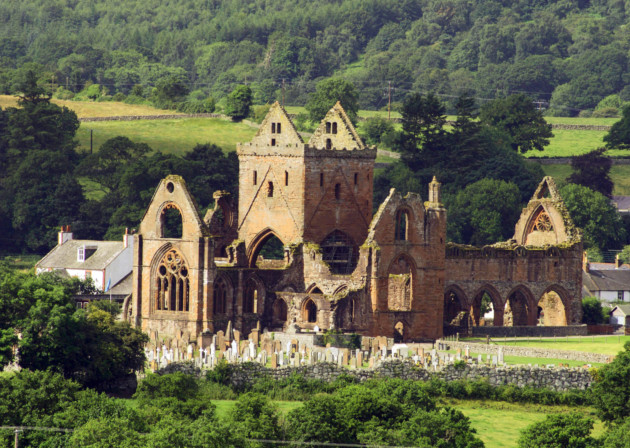
The fiery red sandstone walls of this ruined abbey make it stand out amid the surrounding lush green landscape. As well as residing in an idyllic setting, the story of the abbey’s origins is a moving one. The abbey was founded by Lady Dervorgilla of Galloway in 1273 in memory of her husband, Lord John Balliol, who had passed away five years previously. After her husband’s death, Lady Dervorgilla arranged for his heart to be embalmed so that she could keep it with her at all times in an ivory casket. When Lady Dervorgilla died in 1289 she was laid to rest at the abbey church’s altar, still clutching her husband’s heart in her hands. A 16th-century stone effigy of Lady Dervorgilla can be seen in the south transept. The original effigy was destroyed during the Reformation but Abbot Gilbert instructed a replica should be made and it has remained at the abbey ever since as a reminder of Lady Dervorgilla’s story.
Words: Angharad Moran

